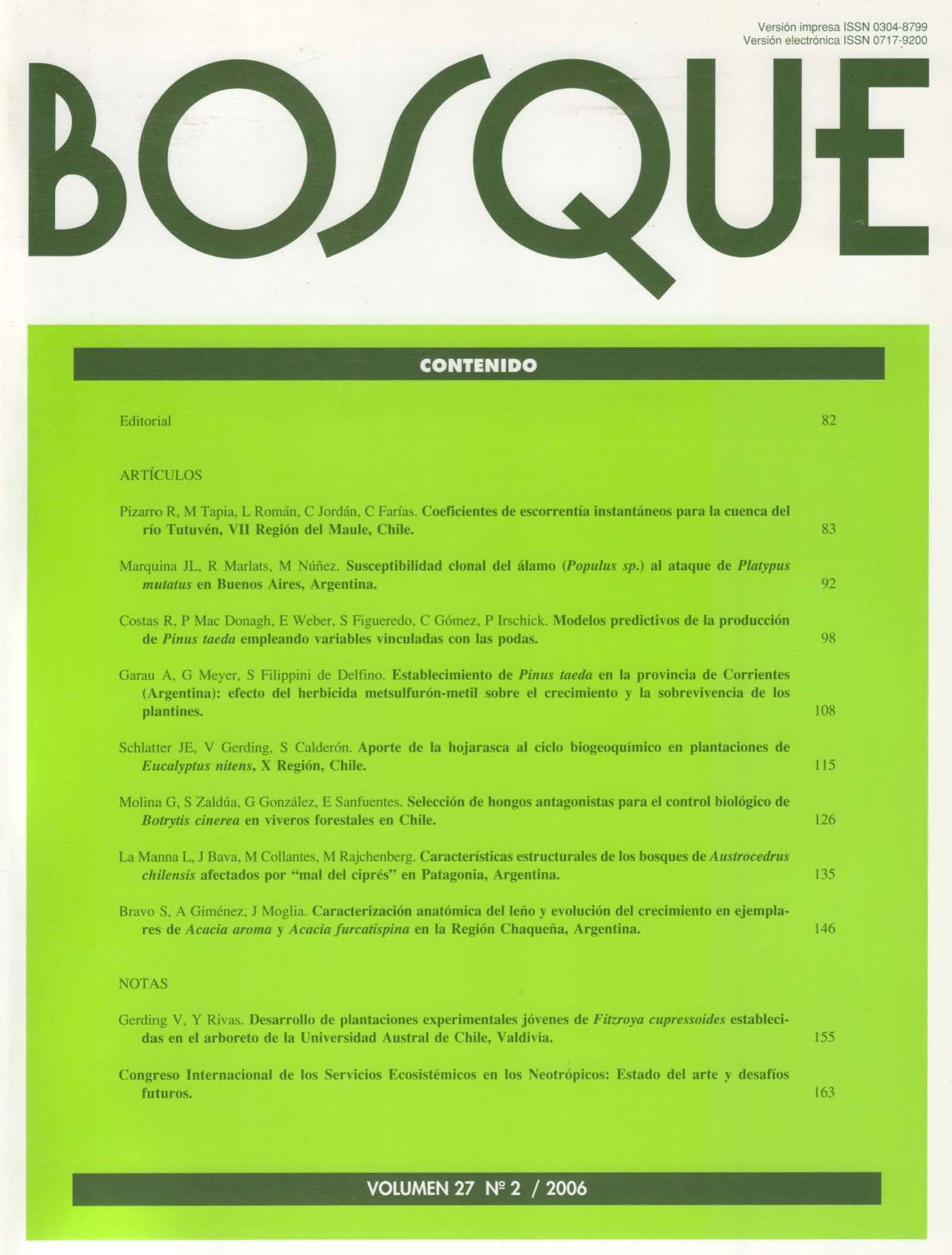Wood anatomical description and growth in individuals of Acacia aroma and Acacia furcatispina in Chaco region, Argentina
Main Article Content
Abstract
The wood of Acacia aroma and Acacia furcatispina is employed for uses of little value such us posts, tools and firewood. The objectives of this work were to study anatomical characters of wood and to analyze the growth of isolated individuals with the purpose of determining their potential for uses of greater value. We determined that these species have high density and heavy wood, with diffuse porosity and tendency to semicircular. The wood of Acacia furcatispina has greater percentage of ligneous elements, better aesthetics qualities and health state than A. aroma. The most frequent defects in these species are rots within heartwood due to fungi attack, and discolorated wood formation, both related to fire scars. The mean width of the growth rings was 2.1 mm (DE = 0.47 mm) in A. aroma and 1.9 mm (DE = 0.74 mm) in A. furcatispina. In A. aroma, the curve of mean annual increment (IMA) intercepted the curve of current annual increment (ICA) for diameter at an age of 24 years, while in A. furcatispina it happened at 10 years. The results show that A. furcatispina is an interesting species to manage in plantations due to its wood qualities, although it would only allow small sized timber. This wood could be allocated for others uses such us parquets and artistic sculpture. Acacia aroma is a species suitable to manage for firewood production due to its capacity to produce greater diameter boles and branches, and to frequent wood decay that reduces its use for others more valuables uses.

